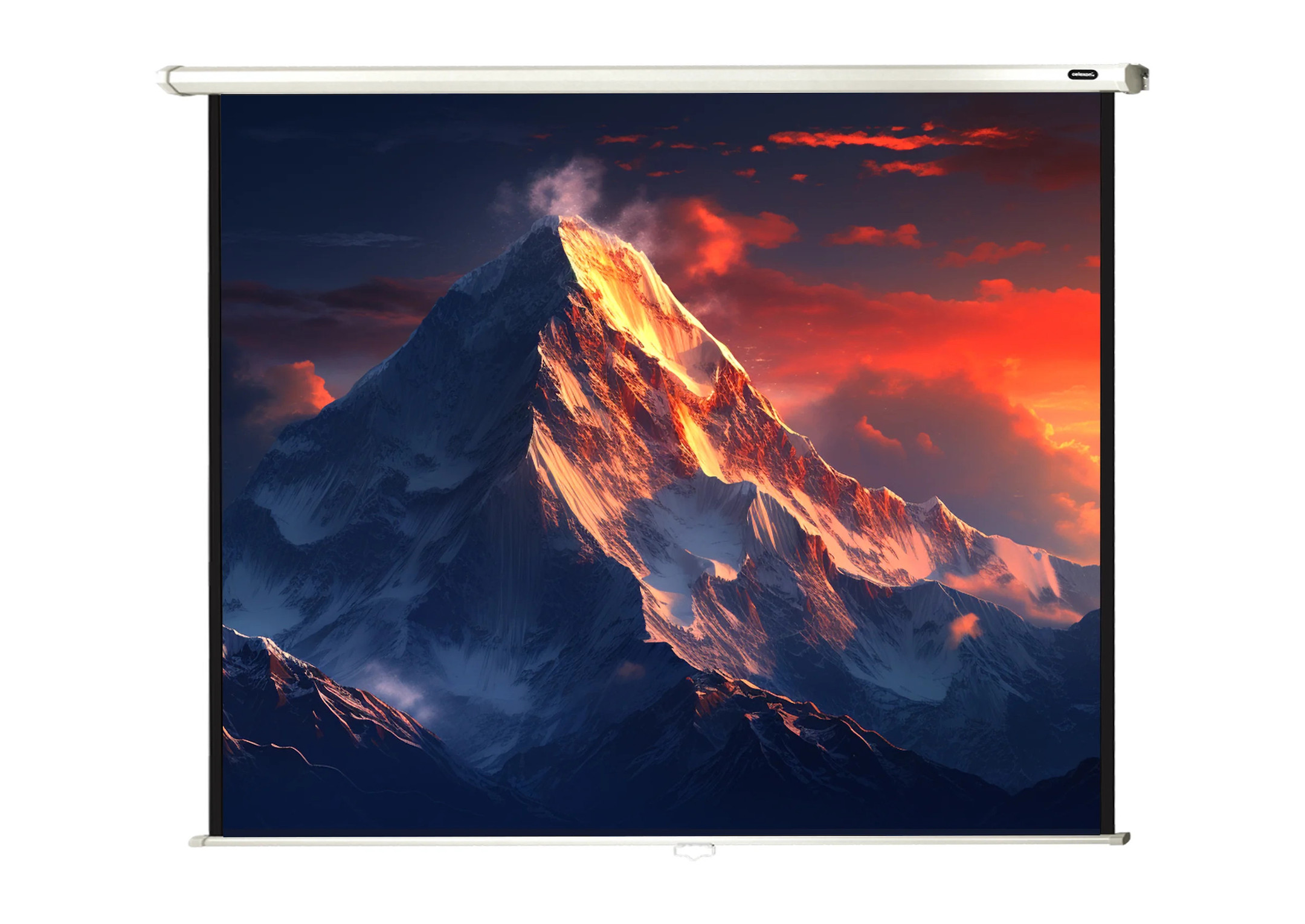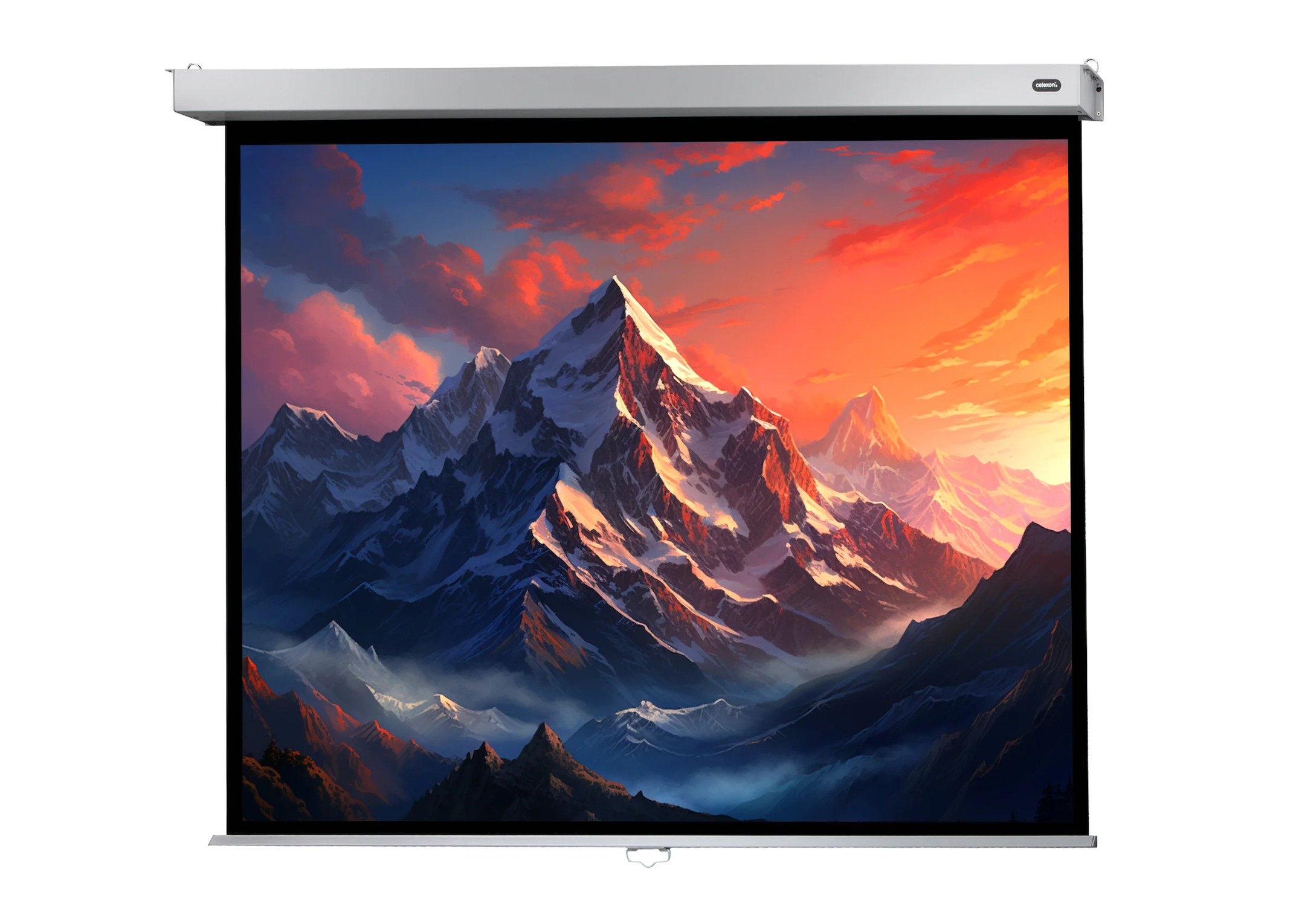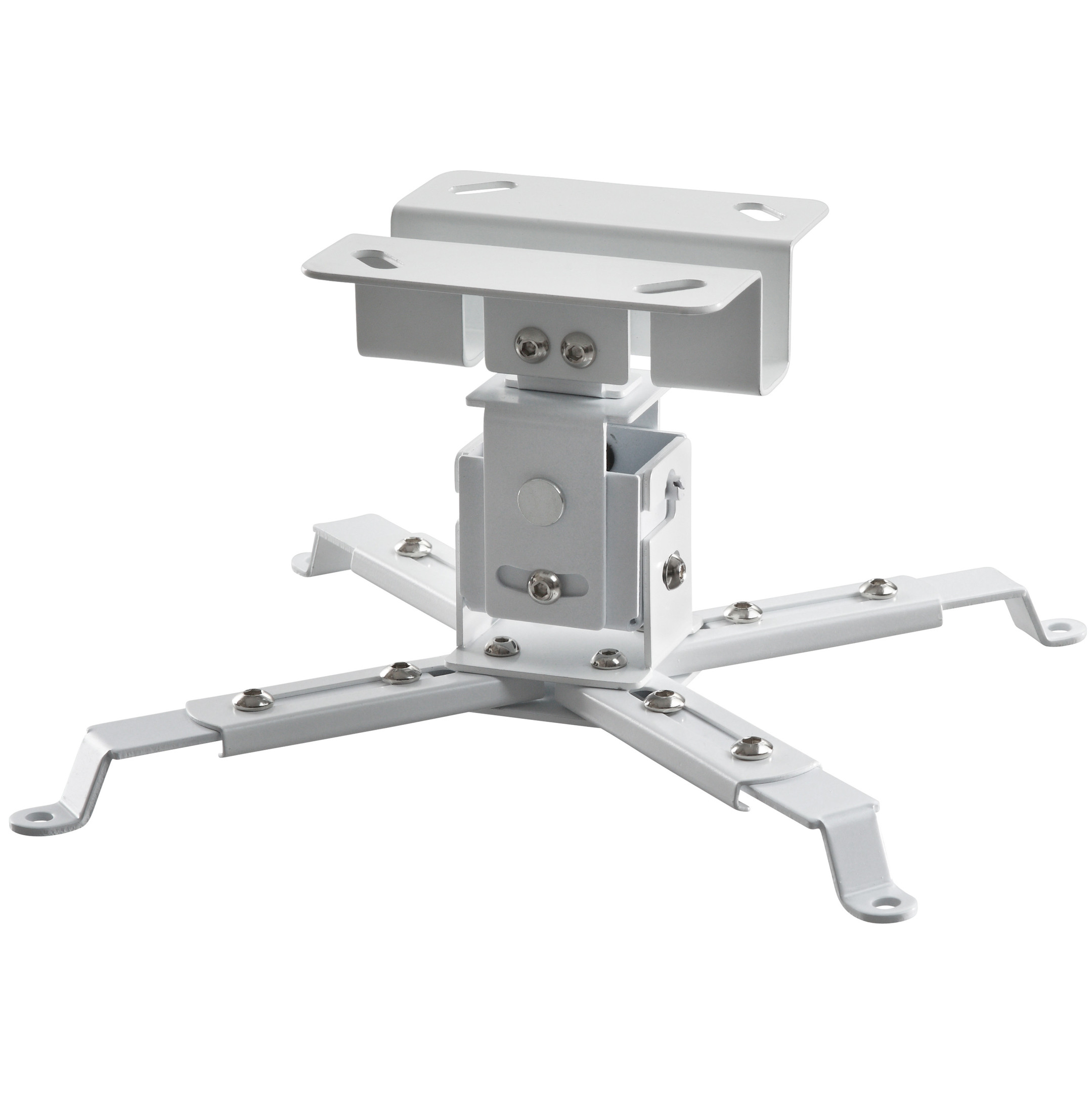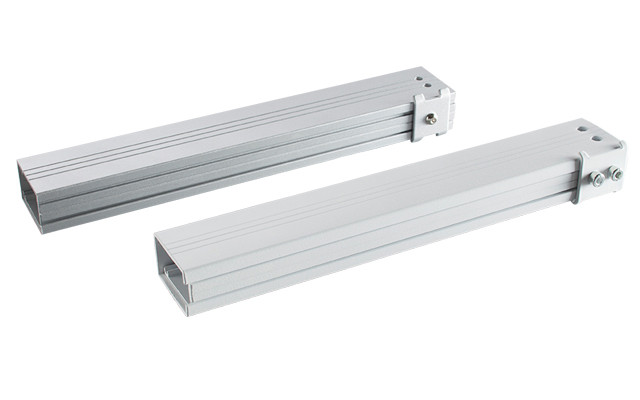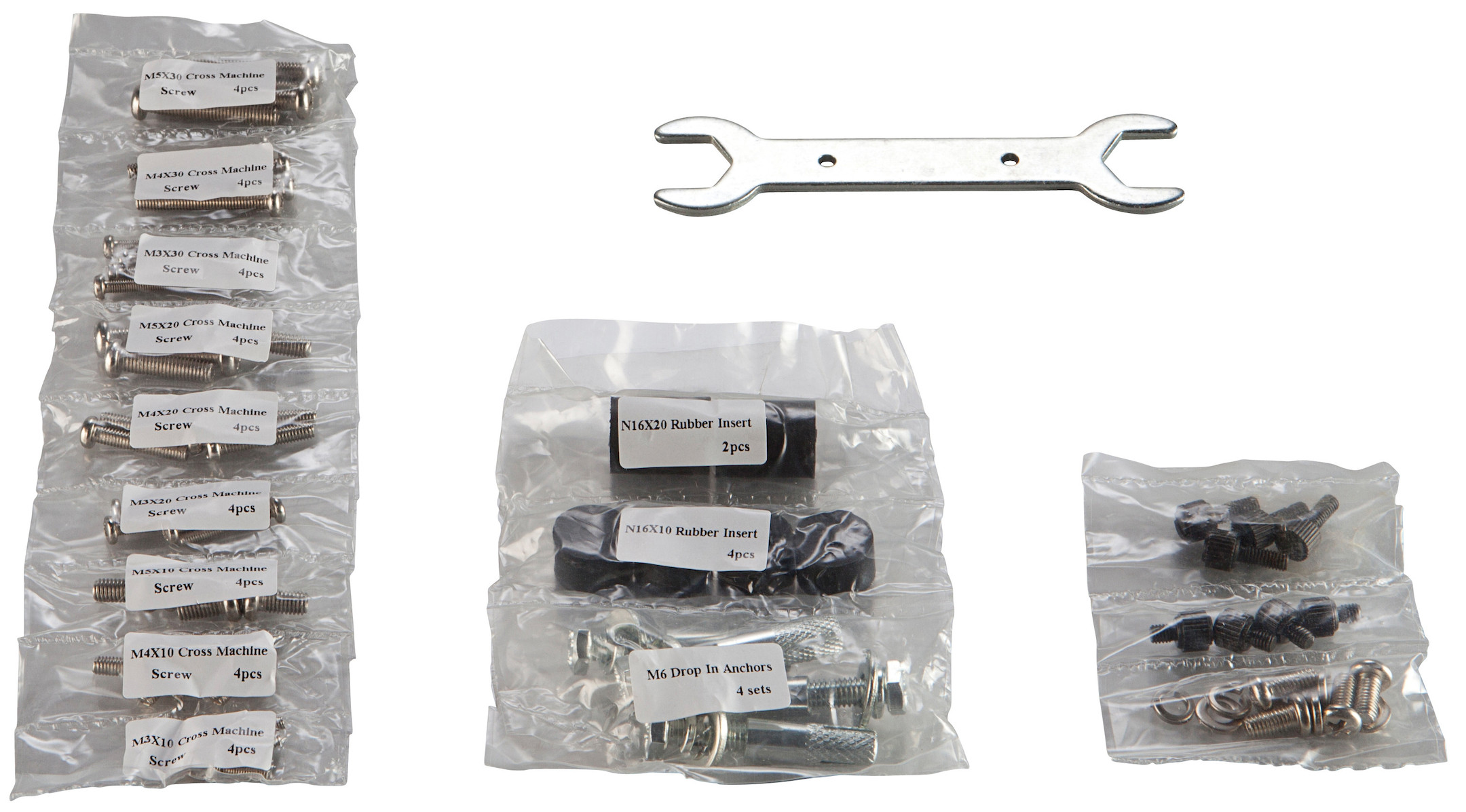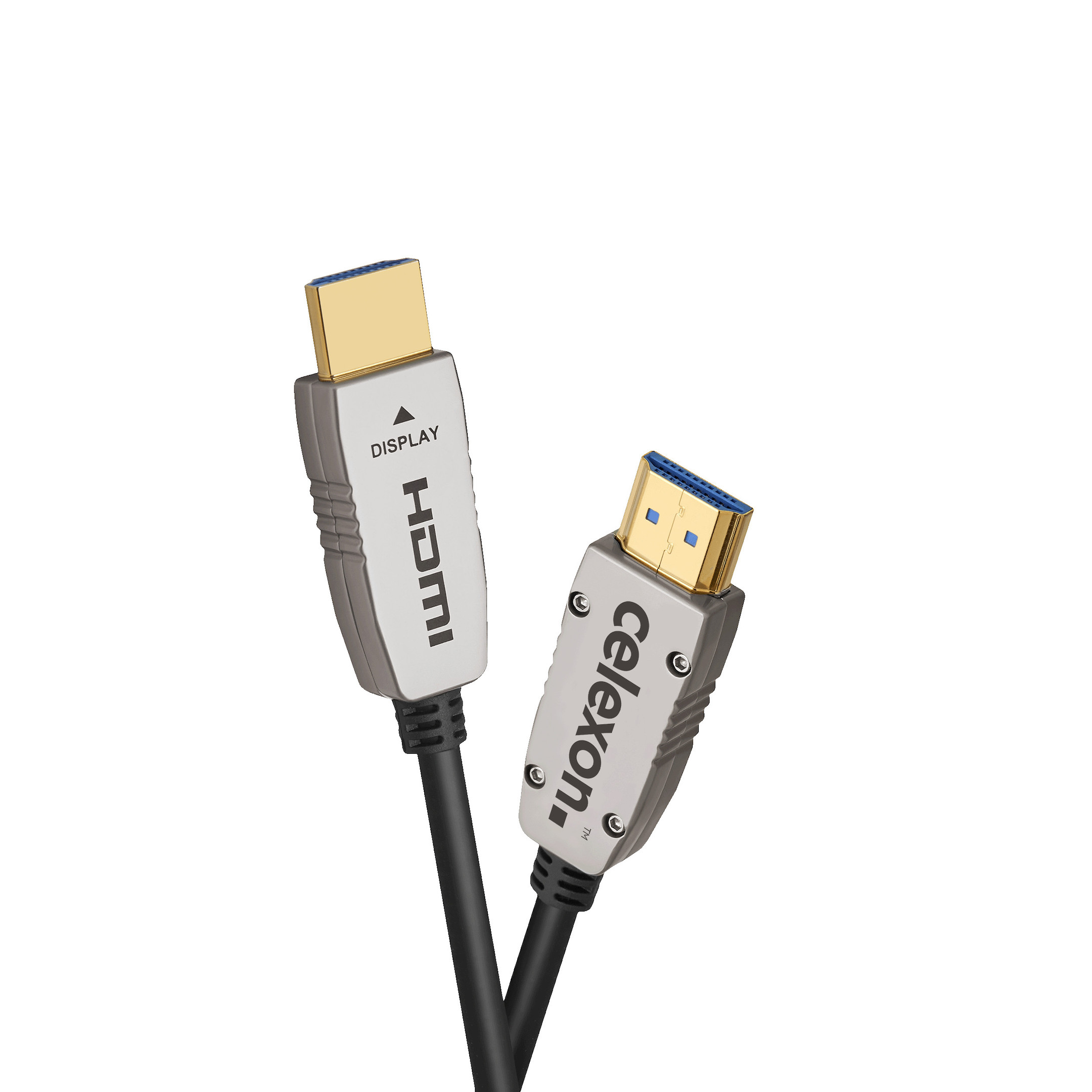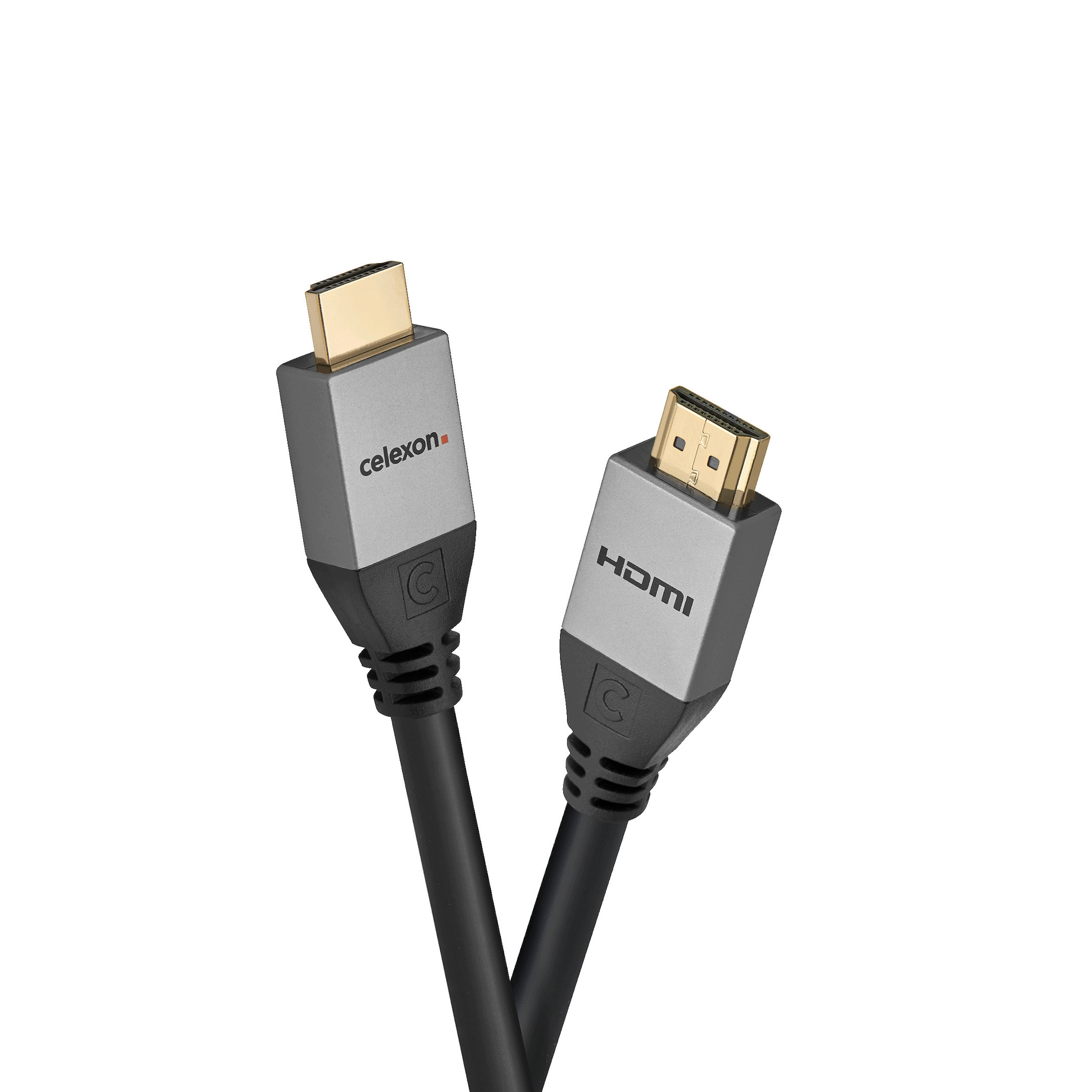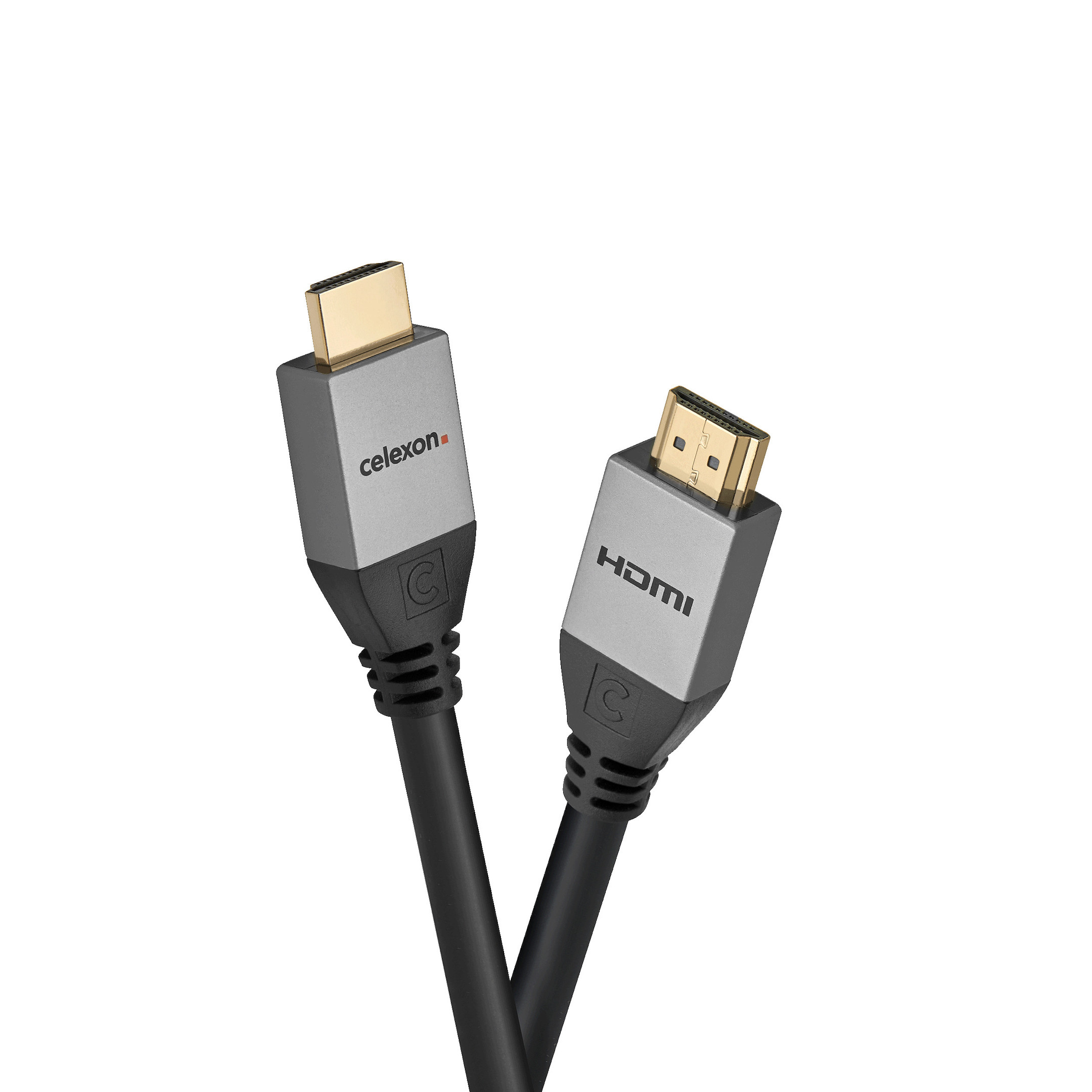InFocus/ScreenPlay SP224 Projector, 1024 x 768 XGA, 4000 Lumen

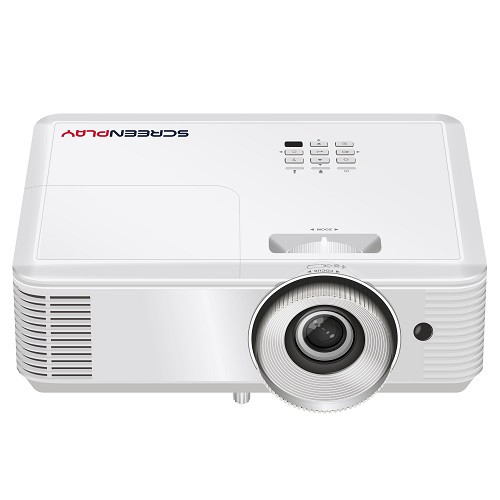


































£405.46*
- ANSI Lumen 4,000 ANSI Lumen
- Resolution 1024 x 768 XGA
- Aspect Ratio 4:3
- Operating noise 27 dB


Frequently purchased together
Product information
MULTI-PURPOSE, WIRELESS READY, FULLY CONNECTED FOR OFFICE, HOME AND CLASSROOM
ScreenPlay Genesis II
DLP projectors are characterised by an extremely long lamp life, high brightness and excellent connectivity options, including 2 HDMI ports. Designed for use in the classroom, office and home, they offer:
- Perfect images.
- Vibrant colours.
- Excellent readability and contrast.
- Compact and lightweight form.
- Versatile portable display solution.
The SP224 projector does more with ultra-long lamp life, high brightness and amazing connectivity options. Beam more perfect images and wow your audience with 2x HDMI inputs, VGA, video and 10-watt audio. And thanks to its compact design and light weight, it's as easy to transport as it is to install.
Low-latency gaming mode
Improved communication time from the input source to your projector for an enhanced gaming experience.
USB-A power supply for devices
Power your external devices such as Amazon Firestick or Roku directly on the projector via the convenient USB-A input.
Industry-leading lamp life
The SP224 offers lamp life of up to 15,000 hours when used in dynamic mode. With no filters to replace, this projector is unbeatably affordable.
Twin HDMI
An additional HDMI port allows you to connect multiple digital sources, so there's no need to change cables.
High brightness
Achieve better, brighter images on any surface and in any light. The SP224 has up to 4000 lumens.
Zoom
The zoom factor provides more flexibility for installations with existing mounts. Adjust the zoom to create the perfect image in the same room.
- XGA/4000 lumens
- Improved gaming mode with low latency
- Digital image shifting
- Digital edge masking
- BrilliantColor®
- HDMI® DLP® Link
- 24/7 operation
- Individual colour adjustments
- 2D- and 3D modes
- RGB-Gain / Bias adjustment
- ISF day and night presets
- Colour space adjustment
- DICOM®-Simulation mode
- Switch on directly
- Switch on signal
- Automatic switch off
- Sleep timer
- Image freeze-Function
Technical data
| Name | InFocus/ScreenPlay SP224 Projector, 1024 x 768 XGA, 4000 Lumen |
|---|---|
| Article number | 1000030359 |
| GTIN/EAN | 0850031865747 |
| Manufacturer SKU | SP224 |
| Lamp life (ECO) | 15,000 Hour |
| Lens included | Yes |
| Model name | SP224 |
| Projection Distance | Long Throw |
| Brand | InFocus/ScreenPlay |
| Product Type | Projector |
| Application | Business projector , Education projectors Application Ultra-short distance projector: Special short-distance projectors equipped with a wide-angle lens have been developed for conference room and classroom use. These projectors are also usually used for operation with interactive whiteboards. These projectors have the ability to project a large image from a very short distance. Ultra-short distance projectors are extremely popular in presenter circles because, for one thing, the image is not obscured when the presenter is standing in front of the screen. Secondly, the presenter is not or only slightly dazzled by the projector. An increase in this effect is offered by ultra-short distance projectors, which project the correspondingly large image from a distance of only a few centimetres. |
| Projector Type | DLP Projector Type DLP: DLP is a projection technique. With DLP technology, the light is sent through a rotating colour wheel. The newer DLP beamers have already increased the number of colour segments on the rotating colour wheel from six to up to eight in order to achieve better colour mixing. The coloured light is beamed onto a DLP chip where there are micro-mirrors. There is one micro-mirror per pixel. From each individual micro-mirror, an image is beamed through the lens onto the projection screen, where an image now appears. Rainbow effect: The rainbow effect basically occurs with all 1-chip DLP projectors. However, only about one third of all users notice this effect. When images are generated by DLP projectors, a specific colour of the colour wheel is successively projected onto the screen for each pixel and interpreted by the viewer's eye as a respective colour with a specific brightness/intensity. The more segments the colour wheel of a DLP projector has and the faster it rotates or the DLP chip is controlled, the smaller the rainbow effect. A flashing of the colours of the colour wheel (red-green-blue, possibly others) is then perceptible, partly with complete, also still images, partly with moving images, but especially at edges between bright and dark image areas. The effect can also be observed in high-contrast or dark images, or when the image content changes rapidly, e.g. in action films. Viewers who notice this effect report, among other things, from slight headaches to severe headaches and dizziness. LCD: LCD (liquid crystal display) is a projection technology. Lamp light is split by a dichroic mirror into its three primary colours: red, green and blue (3LCD). The split light is filtered by the polysilicon liquid crystal panel working for each colour. This creates monochrome images that are superimposed by a prism to create a picture on the screen. Particularly high-quality beamers use four panels (4LCD). With 4LCD beamers, the colour yellow is also separated. This enhancement emphasises the display of yellow. LCoS: LcoS is a projection technique. This technology also uses liquid panels, but the panels are not illuminated as with LCD technology. There are mirrors behind the panels that are similar to DLP technology. These mirrors significantly reduce the fly screen effect and achieve higher contrast values. Rear projection: Many projectors are suitable for so-called rear projection. For rear projection, an appropriately translucent screen is required (rear projection screen). For rear projection, the projector is positioned behind the screen and the corresponding mode is switched on in the projector menu. This function ensures that the image is mirrored. The advantage of rear projection is that the image is not obscured in the area in front of the screen when people walk in front of the image in the cone of light between the projector and the screen. For rear projection, projectors with higher light output are needed, as a lot of light is lost when passing through the screen. Since screens with rear projection surfaces have a high gain factor, the viewing angle decreases, so the audience should be positioned as centrally as possible in front of the screen. This type of rear projection is particularly popular in the event industry. Short-distance projectors: Special short-distance projectors equipped with a wide-angle lens have been developed for conference room and classroom use. These projectors are also commonly used for operation with interactive whiteboards. Short-distance projectors have the property of projecting a large image from a very short distance. This feature is extremely popular in presenter circles because, on the one hand, little of the image is obscured when the presenter is standing in front of the screen. Secondly, the presenter is not or only slightly dazzled by the projector. An increase in this effect is offered by ultra-short distance projectors, which project the correspondingly large image from only a few centimetres away. |
| Projector lamp type | Lamp |
| ANSI Lumen | 4,000 ANSI Lumen ANSI Lumen There are various measurement methods for the brightness of beamers and projectors, which result in different values. Depending on the standard and method, factors such as measuring environment, light source and projection are taken into account. This results in unit names such as ANSI lumen, ISO lumen or LED lumen, which are not directly comparable with each other. ANSI lumen: The most frequently used and standardised measurement of the brightness of projectors. It is based on fixed specifications for the measuring environment and enables precise comparative values. ISO lumens: (approx. 0.99 ANSI lumens) An alternative standard measurement according to the ISO standard, which works in a similar way to ANSI lumens. It is usually only slightly lower, about 0.99 ANSI lumens correspond to 1 ISO lumen. LED lumen: (approx. 1.3-2.4 ANSI lumens) A brightness specification used specifically for LED projectors. It is often higher than ANSI lumens as no standardised measurement standards are used. The factor is between 1.3 and 2.4 compared to ANSI lumens. CVIA lumens: (approx. 1.8-2.5 ANSI lumens) A standard developed specifically for the Chinese market. It takes into account additional criteria such as total system brightness. CVIA lumens correspond to approximately 1.8 to 2.5 ANSI lumens. Note: Our shop filters only use ANSI lumens. To ensure comparability between units, we convert other specifications to ANSI lumens using average values. |
| Resolution | 1024 x 768 XGA Resolution Resolution: The resolution of a projector is the maximum number of image points (pixels) that a projector can display based on its naturally existing technology, i.e. without conversion or cropping of the image. The native resolution is the number of pixels that a projector physically has to display the image. A projector usually interpolates a resolution when it receives an image signal with a higher resolution than the native one. If this is the case, there may be a lack of image detail or general blurring in the displayed image. If a projector receives an image signal with a lower resolution than the native, it also interpolates, it scales the image up to the native resolution, calculates corresponding additional pixels, if possible without changing the image information. The disadvantage here is that although the image is displayed larger than fed, the original individual pixels may become much more visible as they are multiplied by the conversion. 4K: 4K refers to the resolution of 3840 x 2160 or Ultra High Definition Television (UHDTV). This resolution corresponds to 4 times the resolution of Full HD. To record films with this resolution, special cameras are needed that can record at around 8 megapixels (4K). Full HD: The term Full HD is used to describe devices that can physically display or output HDTV signals in full (1920 x 1080 pixels). 1080p: 1080p is the specification of the vertical picture lines. Among other things, it refers to the resolution 1920 x 1080. The "p" in this case means full frames, so all picture lines are displayed simultaneously. 1080i: 1080i is the specification of the vertical picture lines. The "i" in this case means fields. This signal is usually displayed interpolated (e.g. by devices with a 1280 x 720 HDready resolution). The interpolation digitally adds pixels, but also offers a slight blurring. In contrast, 1080p playback uses full frames. |
| Aspect Ratio | 4:3 Aspect Ratio Format: The projected image is output in a format (aspect ratio) specified by the projector. The format is also determined by the resolution of the projector (see also the entry "Resolution"). The screen format is usually selected on the basis of the format of the beamer image. The most common formats are 4:3, 16:9 and 16:10. |
| Contrast Ratio | 30,000 :1 Contrast Ratio Contrast: The contrast reflects the gradations between the lightest and darkest point. This is determined from white to grey to black. The higher the contrast, the more precisely the individual gradations between the respective sections can be recognised. In real use, however, the contrast actually only plays a role in darkened rooms, as the light counteracts the contrast. Therefore, contrast plays a rather subordinate role in presentation devices. It should also be noted that the contrast is determined differently depending on the technology. This often results in very different values on paper. Black level: The black level indicates the lowest light value of the projection that is achieved when projecting a black image. The better the black level, the more the dark colours / black tones are emphasised in the image. |
| Operating noise | 27 dB Operating noise Operating noise: Naturally, every projector produces an operating noise due to the cooling function of the ventilation fan. This is specified by the manufacturer in the data sheet in dB (decibels). In Eco mode, the projectors are quieter than in normal operation due to the reduced output. However, the manufacturers' specifications do not always correspond to reality, as there is no standardised measurement procedure for this measurement. Thus, the projectors cannot be compared exactly by the volume specification. Decibel (dB): Naturally, every projector emits an operating noise caused by the cooling function of the ventilation fan. This is specified by the manufacturer in the data sheet in dB (decibels). In Eco mode, the projectors are quieter than in normal operation due to the reduced output. However, the manufacturers' specifications do not always correspond to reality, as there is no standardised measurement procedure for this measurement. Thus, the projectors are not exactly comparable by the volume specification. Volume: Naturally, every projector produces an operating noise due to the cooling function of the ventilation fan. This is indicated by the manufacturer in the data sheet in dB (decibels). In Eco mode, the projectors are quieter than in normal operation due to the reduced output. However, the manufacturers' specifications do not always correspond to reality, as there is no standardised measurement procedure for this measurement. Thus, the projectors are not exactly comparable in terms of volume. |
| Operating noise - ECO | 27 dB Operating noise - ECO Operating noise: Naturally, every projector produces an operating noise due to the cooling function of the ventilation fan. This is specified by the manufacturer in the data sheet in dB (decibels). In Eco mode, the projectors are quieter than in normal operation due to the reduced output. However, the manufacturers' specifications do not always correspond to reality, as there is no standardised measurement procedure for this measurement. Thus, the projectors cannot be compared exactly by the volume specification. Decibel (dB): Naturally, every projector emits an operating noise caused by the cooling function of the ventilation fan. This is specified by the manufacturer in the data sheet in dB (decibels). In Eco mode, the projectors are quieter than in normal operation due to the reduced output. However, the manufacturers' specifications do not always correspond to reality, as there is no standardised measurement procedure for this measurement. Thus, the projectors are not exactly comparable by the volume specification. Volume: Naturally, every projector produces an operating noise due to the cooling function of the ventilation fan. This is indicated by the manufacturer in the data sheet in dB (decibels). In Eco mode, the projectors are quieter than in normal operation due to the reduced output. However, the manufacturers' specifications do not always correspond to reality, as there is no standardised measurement procedure for this measurement. Thus, the projectors are not exactly comparable in terms of volume. |
| Lamp life | 8,000 Hour Lamp life Lamp life: The lamp life is specified by the manufacturer once in normal mode and once in eco mode. Depending on which mode the projector is used in, the lamp may last less or longer. However, the lamp life also depends on the duration of use. The longer a projector is in operation, the sooner it can lose its service life. Furthermore, external influences such as dust or nicotine can lead to a reduction in the service life. In order to ensure a longer lamp life, appropriate maintenance of the unit is necessary. Maintenance means that the air filter of LCD projectors should be vacuumed out frequently or replaced completely if there is a corresponding build-up of dirt. The exact service life of a projector cannot be determined exactly because of this. In order to accommodate the user, the various manufacturers offer different lamp warranty conditions for their devices. For example, one year on the lamp or up to 1000 lamp hours, whichever comes first. However, this varies from manufacturer to manufacturer and can be found in the specific data sheets. |
| run-time | 24/7 |
| Minimum Projection Distance | 120 cm |
| Maximum Projection Distance | 1,190 cm |
| Minimum Projection Ratio | 1.94 Minimum Projection Ratio Projection ratio: The projection ratio indicates at which projection distance a corresponding image width is achieved. This value depends on the lens installed.Example 1 - Calculating the distance: Projection ratio 1.4-1.8:1 Desired image width = 300cm Result: 420 - 540 cm distance (300 x 1.4 or 1.8). Example 2 - Calculation of possible image widths: Projection ratio 1.4-1.8:1 Projection distance = 560cm Result: 311 - 400cm image width (560 / 1.4 or 1.8). |
| Maximum Projection Ratio | 2.16 Maximum Projection Ratio Projection ratio: The projection ratio indicates at which projection distance a corresponding image width is achieved. This value depends on the lens installed.Example 1 - Calculating the distance: Projection ratio 1.4-1.8:1 Desired image width = 300cm Result: 420 - 540 cm distance (300 x 1.4 or 1.8). Example 2 - Calculation of possible image widths: Projection ratio 1.4-1.8:1 Projection distance = 560cm Result: 311 - 400cm image width (560 / 1.4 or 1.8). |
| Vertical Keystone | 40% Vertical Keystone Keystone correction horizontal: If possible, a projector should always be aligned at right angles and horizontally to the screen in order to achieve an optimal result. However, in practice this is not always possible. For this reason, almost all beamers are equipped with vertical keystone correction and some models are also equipped with horizontal keystone correction. This function digitally compensates for and corrects trapezoidal distortion of the image. Furthermore, there is also an auto keystone correction, whereby the projector automatically detects the tilt and adjusts itself. Offset: The majority of projectors do not project straight ahead, but with a slight vertical offset downwards or upwards ( depending on the type of installation there are, for example, table or ceiling installations that make this offset useful). This so-called offset can be compensated for with the help of vertical keystone correction (caution: loss of quality!) or lens shift function (optical, loss-free solution) (if available on the projector). |
| Inputs | 1x 3,5mm Jack , 1x S-Video , 1x USB-A , 1x VGA , 2x HDMI Inputs HDMI: Digital connection for the transmission of picture & sound. Necessary for high-resolution picture quality (HDTV). Since HDMI 1.4 (High Speed) suitable for transmission of 3D content in Full HD. For high-resolution picture quality in UHD, 4K or HDR, the connection via HDMI 2.0a and higher is suitable. HDMI 2.1 or higher should be used from 120Hz refresh rate in 4K. VGA: The VGA connector is a 15-pin connector for analogue image transmission. It is also called DSub15 and is often found on notebooks and PCs. Compared to the other analogue connections, it offers good picture quality. It can be screwed to the input or output device and can be adapted to YUV with a suitable configuration. DisplayPort: The DisplayPort connection is a VESA-standardised connection for the transmission of image and sound data. In addition to HDCP encryption, DPCP is also supported. Due to its compact size, the connection is most commonly used in notebooks. An extra small variant is the MiniDisplayPort, which is used especially with Apple devices. DVI: DVI (Digital Visual Interface) is an interface for the transmission of video data. Only analogue signals can be transmitted via DVi-A, only digital signals via DVI-D and both types of signals via DVI-I. USB: USB (Universal Serial Bus) is used to control and manage the projector (USB-B). With some business devices, office files and images can also be presented directly with a USB stick or a mouse can be connected via the USB input (USB-A). Toslink: The Toslink connection is an optical signal connection that works on an optical fibre basis. It is used for the digital transmission of audio signals. The optical design offers a lower susceptibility to interference from external magnetic and electrical influences. The connection is mostly used in the area of DVD / Blu-ray players and comparable devices in connection with an AV receiver, if these work with dts or Dolby Digital signals. YUV: The YUV connection, also called Y Cb/Pb Cr/Pr or component connection, is an analogue video connection with three channels (light intensity and two colour channels). Qualitatively, it is the best analogue video connection. Component cable: The YUV connector transmits analogue signals over three cables (Y=black and white UV=colours). YUV is used to transmit HDTV and is compatible with Cinch, for example. S-Video: The S-Video connection is also called S-VHS or Hosiden connection. Compared to the Cinch video connection, it works with two channels (brightness/colour). In terms of quality, it is somewhat better than the Cinch video connection, but there are also limitations. These can be explained by the susceptibility of the signal, which is reflected in picture distortions, for example. Cinch: The cinch video connection is also called composite connection. To make it easier to recognise, it is usually sheathed in yellow. Since the transmission is only via one channel, the picture quality is on a low level. D-Sub15: The VGA connector is a 15-pin connector for image transmission on an analogue basis. It is also called DSub15 and is often found on notebooks and PCs. Compared to the other analogue connectors, it offers good picture quality. It can be screwed to the input or output device and can be adapted to YUV with a suitable configuration. RS232: The RS232 interface can be used to control or manage the projector. Mini Jack: With a single-pin Mini Jack, mono audio signals can be transmitted, with a two-pin stereo audio signals and with a three-pin stereo audio signals and image data can be transmitted. Scart: Scart is a connector that can be used to transmit analogue audio and video signals. It is compatible with other analogue connections such as RCA or S-Video. ARC: The audio return channel, also called ARC or audio return channel, was introduced with HDMI version 1.4 to reduce the amount of cabling between HDMI components. The audio return channel runs via the existing HDMI cable. Therefore, an additional cable for the sound no longer needs to be connected. However, both devices must support ARC. All audio file formats that are also transmitted via the SPDIF interface can be transmitted via the audio return channel. These include Dolby Digital, Digital Theatre Sound and PCM audio. As an example, a connection between a TV (including receiver) and an AV receiver could be made via an HDMI cable. The sound from the TV is fed back via the HDMI cable. Previously, an additional digital cable (coaxial or Tos-Link) was required for the audio signals. |
| Outputs | 1x 3,5mm Jack , 1x VGA Outputs HDMI: Digital connection for the transmission of picture & sound. Necessary for high-resolution picture quality (HDTV). Since HDMI 1.4 (High Speed) suitable for transmission of 3D content in Full HD. For high-resolution picture quality in UHD, 4K or HDR, the connection via HDMI 2.0a and higher is suitable. HDMI 2.1 or higher should be used from 120Hz refresh rate in 4K. VGA: The VGA connector is a 15-pin connector for analogue image transmission. It is also called DSub15 and is often found on notebooks and PCs. Compared to the other analogue connections, it offers good picture quality. It can be screwed to the input or output device and can be adapted to YUV with a suitable configuration. DisplayPort: The DisplayPort connection is a VESA-standardised connection for the transmission of image and sound data. In addition to HDCP encryption, DPCP is also supported. Due to its compact size, the connection is most commonly used in notebooks. An extra small variant is the MiniDisplayPort, which is used especially with Apple devices. DVI: DVI (Digital Visual Interface) is an interface for the transmission of video data. Only analogue signals can be transmitted via DVi-A, only digital signals via DVI-D and both types of signals via DVI-I. USB: USB (Universal Serial Bus) is used to control and manage the projector (USB-B). With some business devices, office files and images can also be presented directly with a USB stick or a mouse can be connected via the USB input (USB-A). Toslink: The Toslink connection is an optical signal connection that works on an optical fibre basis. It is used for the digital transmission of audio signals. The optical design offers a lower susceptibility to interference from external magnetic and electrical influences. The connection is mostly used in the area of DVD / Blu-ray players and comparable devices in connection with an AV receiver, if these work with dts or Dolby Digital signals. YUV: The YUV connection, also called Y Cb/Pb Cr/Pr or component connection, is an analogue video connection with three channels (light intensity and two colour channels). Qualitatively, it is the best analogue video connection. Component cable: The YUV connector transmits analogue signals over three cables (Y=black and white UV=colours). YUV is used to transmit HDTV and is compatible with Cinch, for example. S-Video: The S-Video connection is also called S-VHS or Hosiden connection. Compared to the Cinch video connection, it works with two channels (brightness/colour). In terms of quality, it is somewhat better than the Cinch video connection, but there are also limitations. These can be explained by the susceptibility of the signal, which is reflected in picture distortions, for example. Cinch: The cinch video connection is also called composite connection. To make it easier to recognise, it is usually sheathed in yellow. Since the transmission is only via one channel, the picture quality is on a low level. D-Sub15: The VGA connector is a 15-pin connector for image transmission on an analogue basis. It is also called DSub15 and is often found on notebooks and PCs. Compared to the other analogue connectors, it offers good picture quality. It can be screwed to the input or output device and can be adapted to YUV with a suitable configuration. RS232: The RS232 interface can be used to control or manage the projector. Mini Jack: With a single-pin Mini Jack, mono audio signals can be transmitted, with a two-pin stereo audio signals and with a three-pin stereo audio signals and image data can be transmitted. Scart: Scart is a connector that can be used to transmit analogue audio and video signals. It is compatible with other analogue connections such as RCA or S-Video. ARC: The audio return channel, also called ARC or audio return channel, was introduced with HDMI version 1.4 to reduce the amount of cabling between HDMI components. The audio return channel runs via the existing HDMI cable. Therefore, an additional cable for the sound no longer needs to be connected. However, both devices must support ARC. All audio file formats that are also transmitted via the SPDIF interface can be transmitted via the audio return channel. These include Dolby Digital, Digital Theatre Sound and PCM audio. As an example, a connection between a TV (including receiver) and an AV receiver could be made via an HDMI cable. The sound from the TV is fed back via the HDMI cable. Previously, an additional digital cable (coaxial or Tos-Link) was required for the audio signals. |
| wireless technology | WLAN optional wireless technology WLAN: WLAN (Wireless Local Area Network) refers to a wireless network. For example, projectors or displays can be connected wirelessly to various sources (notebooks, smartphones, etc.) to realise wireless image transmission. In some cases, additional components (dongles/adapters) are required for this if a wireless connection is not directly supported. AirPlay: Apple's AirPlay technology is used for wireless transmission of content, such as music and videos, from iOS and Mac devices. These can also be receiver devices such as speakers, AV receivers and stereo systems or TVs. Streaming also works from an iOS device to a matching receiver. The protocol developed by Apple can also be licensed by other manufacturers. iProjection: With the free Epson iProjection app, projectors can be operated remotely and office content and photos can be projected. The app is compatible with current Epson business projectors and can also be used as a practical remote control. Other features of this functionality include searching for available projectors, volume control, mute, and a freeze function to freeze the current image of a presentation. The most important Office contents, such as Word, Excel, PowerPoint, Keynote and PDF files, are supported and can be played back directly from the medium. Images in JPEG and PNG format can also be presented directly. The Epson iProjection app is available for download free of charge from the Apple App Store and the google Play Store. Easy MP: A special network function from Epson. The Easy MP function allows you to present efficiently over multiple computers via an existing network. Easy MP allows you to transfer a presentation, images as well as audio data via the network and thus receive a selection from various sources in the network. |
| Features | DICOM , Integrated speaker , Lens motorised , isf_isfcc |
| Product width | 31.3 cm |
| Product height | 10.7 cm |
| Product depth | 23.6 cm |
| Weight | 2.6 kg |
| Colour | White |
| Delivery contents | Batteries , Power cable , Remote control , VGA cable |
| Condition | New |
| Warranty | 24 Month |
| Warranty type | Bringin service Service and support information |
Projection distance calculator
Contact our experts for help!
Image size:
Format
Format
Product safety
| Person responsible for the EU |
|---|
| infocus multimedia |
| Weißenburger Platz 1 |
| 80667 München |
| Germany |
| info@infocus-multimedia.de |




